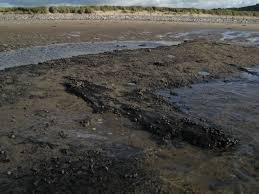Tucked away in the landscapes of upstate New York lies a hidden gem that defies expectations and surpasses the age of renowned natural wonders, the world’s oldest fossil forest. Discovered in the heart of Cairo, USA, this ancient treasure unveils a network of trees believed to have thrived over 386 million years ago, predating even the iconic Amazon rainforest and India’s legendary jungles.
Led by a team of dedicated scientists from prestigious institutions including Binghamton University, New York State Museum, and Cardiff University, a comprehensive mapping of this ancient forest was painstakingly undertaken in 2019.
Exploring the Primordial Ecosystem
Located within the foothills of the majestic Catskill Mountains, this primordial ecosystem spans approximately 3,000 square meters, offering a mesmerizing glimpse into a distant past teeming with life. Among its inhabitants are a diverse array of ancient plants, including early fern-like species and towering Archaeopteris trees adorned with frond-like branches. Additionally, the discovery of a possible lycopod specimen adds further intrigue to the forest’s botanical diversity.
Botanical Wonders of the Past
What truly sets this ancient woodland apart is its unique mode of reproduction—all trees propagated solely through spores, marking a significant milestone in botanical evolution. Dr. Christopher Berry, a renowned paleobotanist at Cardiff University, described the experience of wandering amid the roots of these ancient trees as nothing short of a journey through time. Envisioning a landscape rich with coniferous-like trees and clusters of fern-like plants, Dr. Berry’s insights paint a vivid picture of the forest’s ancient past, offering a glimpse into a world long forgotten.
Moreover, this remarkable discovery offers invaluable insights into Earth’s transition into a forested planet. Through collaboration with esteemed researchers from Sheffield University, scientists delve into the fossilized soil between the trees, meticulously analyzing geochemical changes to unravel the mysteries of global environmental processes. Understanding the ecology and habitats of these early forests is not only crucial for comprehending Earth’s ecological landscape but also for shedding light on the processes driving global change.

Journey through time
This ancient woodland serves as a time capsule, illuminating the ancient history of our planet and underscoring the pivotal role of early forests in shaping Earth’s ecological diversity. By delving into the secrets of this fossil forest, we begin on a journey to gain a deeper understanding of our planet’s rich natural history, paving the way for a more comprehensive appreciation of the intricate processes driving global change. As researchers continue to unravel the mysteries hidden within these ancient trees, they offer us a glimpse into a world long gone, inspiring awe and wonder at the remarkable journey of life on Earth.
Expanding further, the discovery of this ancient forest not only sheds light on Earth’s distant past but also prompts contemplation about the future of our planet’s ecosystems. By studying the intricate interactions within this primordial landscape, scientists hope to glean insights into how modern forests may respond to ongoing environmental changes. Additionally, the fossilized remains of ancient plants offer clues about past climates and atmospheric conditions, providing valuable data for climate scientists striving to understand the complexities of our planet’s changing climate.
Read More:- Passport-Free Journeys through Malaysia Singapore’s QR Code Breakthrough
Our Responsibility for Conservation
The significance of this discovery extends beyond scientific curiosity, serving as a reminder of the resilience of life on Earth. Despite the passage of millions of years and countless geological upheavals, the fossilized remnants of this ancient forest stand as a testament to the enduring power of nature. As we marvel at the intricacies of this prehistoric ecosystem, we are reminded of our responsibility to preserve and protect the natural world for future generations.
Disclaimer: The above information is a result of research and Axpert Media is not responsible for errors in the same.
